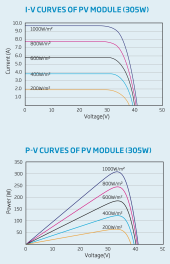I plan to use 450watt panels. I want to put two panels per string in parallel because I'm using Electrodocus. The runs will be quite short because it's a 12x16 ft cabin so voltage drop isn't that much of a concern. I was gifted a bunch of 10 AWG RMW-2 wire. It says the circuit protection should not exceed 30 amps.
Do I need to use the 80% rule on solar circuits? Panel IMP 13.16 A. 13.16 x 2 = 26.32 amps. So if multiplied by 1.25% we get 32.9 which is more than 30 amps. Would it be ok to use the wire and a 30 amp fuse or breaker? Our fuses able to handle currency exceeding 80% of they're ratings more than breakers? I realize the panels won't produce max amperage continuously or even on those days. As the solar panels degrade the max amperage will be lower. Thanks for your help.
Do I need to use the 80% rule on solar circuits? Panel IMP 13.16 A. 13.16 x 2 = 26.32 amps. So if multiplied by 1.25% we get 32.9 which is more than 30 amps. Would it be ok to use the wire and a 30 amp fuse or breaker? Our fuses able to handle currency exceeding 80% of they're ratings more than breakers? I realize the panels won't produce max amperage continuously or even on those days. As the solar panels degrade the max amperage will be lower. Thanks for your help.



